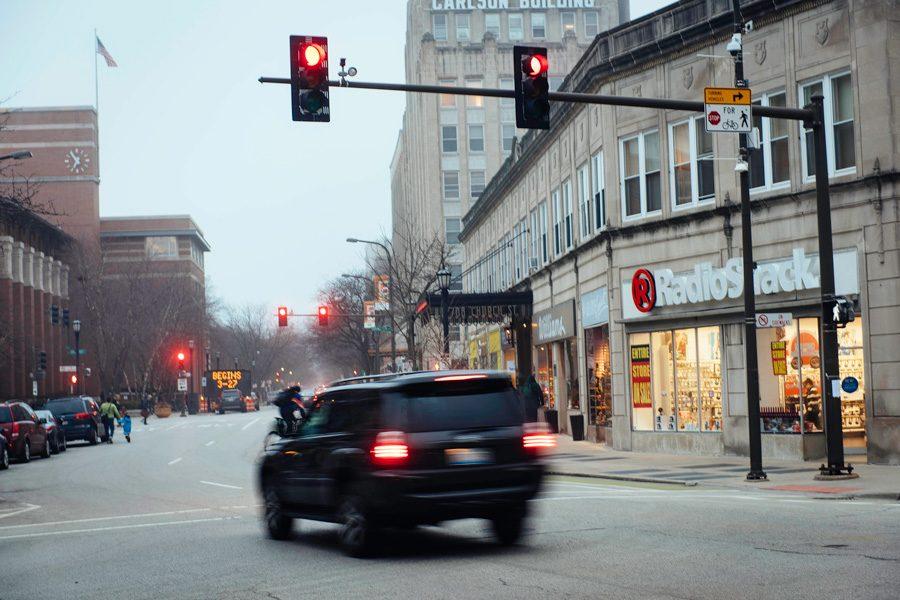Chicago changes red light camera program following Northwestern study
Noah Frick-Alofs/The Daily Northwestern
A car runs a red light on the intersection of Sherman Ave. and Church St. Chicago will be relocating six red light cameras and increasing the grace period for running a red light in response to a study held by the Northwestern Transportation Center.
March 29, 2017
Chicago will make changes to its red light camera program based on the findings of a study conducted by the Northwestern Transportation Center, officials said.
According to a Northwestern Transportation Center study released in March, there is a significant reduction in right-angle crashes, which are the most severe and common accidents, as a result of the installation of red light cameras. Based on the study, Chicago will increase the grace period for running a red light from one-tenth to three-tenths of a second and relocate six cameras, the city’s Transportation Department spokesman Mike Claffey said.
McCormick Prof. Hani Mahmassani, director of the NU Transportation Center, said the red light cameras improve safety.
“The safety benefits are there,” Mahmassani said. “If the objective is safety, then the program is doing its job.”
The study, which was commissioned by the Chicago Department of Transportation, compared data of crashes three years prior to and after the installation of cameras in 2008 and 2009, Mahmassani said.
The study examines the issue of law-abiding citizens unintentionally crossing an intersection during a red light. At the “dilemma zone,” drivers aren’t sure what to do and may make the mistake of entering the intersection the second the traffic light turns, Mahmassani said. The study recommends that the city extend the grace period from its current one-tenth of a second.
Changes to the grace period were implemented last week, the Chicago Tribune reported.
“We’re showing greater tolerance to drivers who are not intending to break the law but are caught in this dilemma zone,” Claffey told The Daily. “This greater tolerance for drivers puts us in line with New York and Philadelphia and other cities.”
One of the study’s conductors, McCormick Prof. Joseph Schofer, said safe driving practices and the reduction of crashes can be seen beyond the areas monitored by the cameras because of how people become aware of enforcement. This is called the “spillover effect,” in which red light cameras have an influence beyond their surveillance areas, he said.
“It changes the driver’s mindset from ‘It’s not like I’m going to get caught anywhere’ to ‘I can get caught everywhere because I’m not sure where the cameras are,’” he said.
The study also evaluates the crash and violation rates in areas monitored by red light cameras and identifies which areas have high crash rates and red light violation rates. The study also recommended the city relocate the red light cameras to several intersections throughout the city.
Mayor Rahm Emanuel’s administration has been dedicated to improving the red light camera program, especially after the Chicago Tribune reported that Redflex Traffic Systems Inc. in 2012 had bribed its way into City Hall. The program has been controversial ever since, Claffey said.
“The point is we want the public to understand that the goal of program is traffic safety,” Claffey said. “We think we can make a real difference and save a lot of people’s lives and prevent (deaths).”
Email: [email protected]
Twitter: @ck_525












